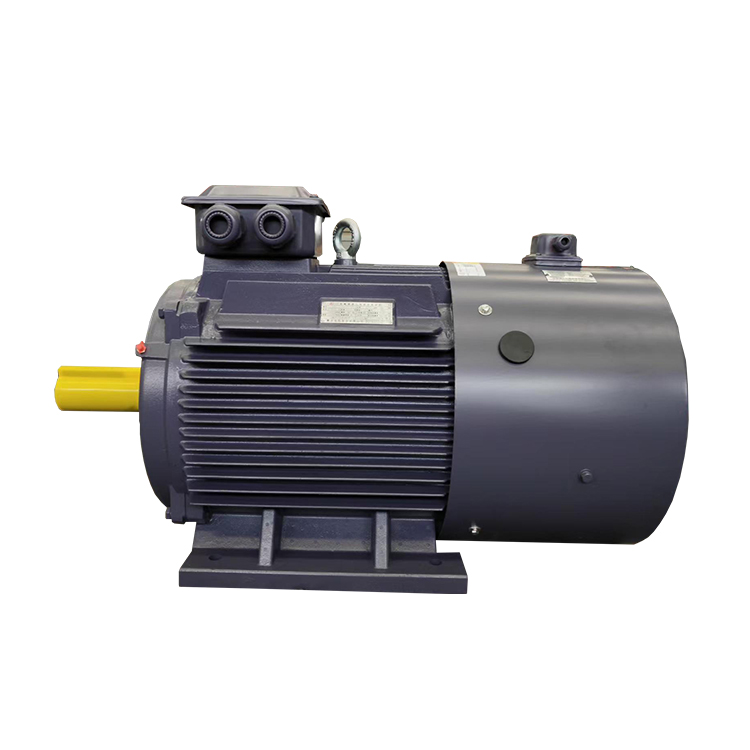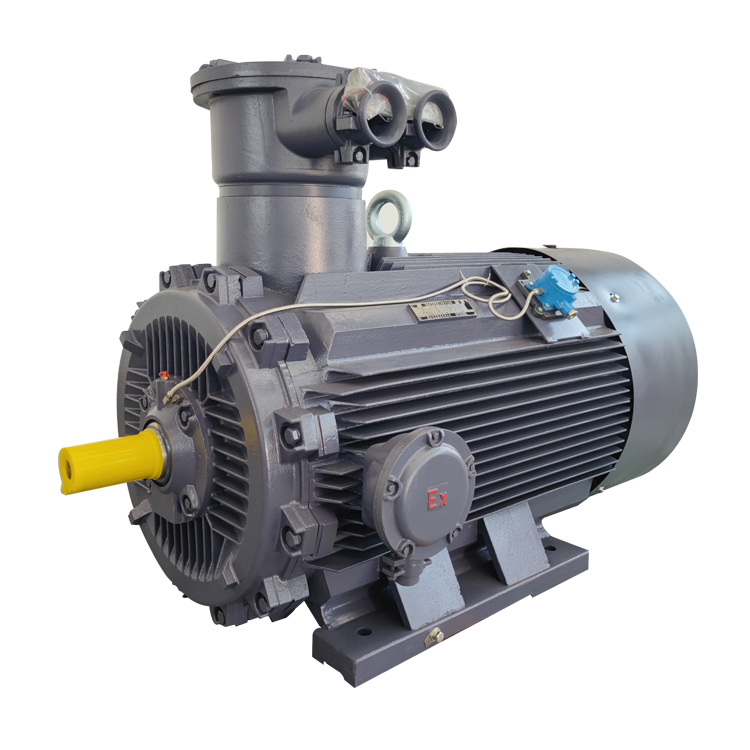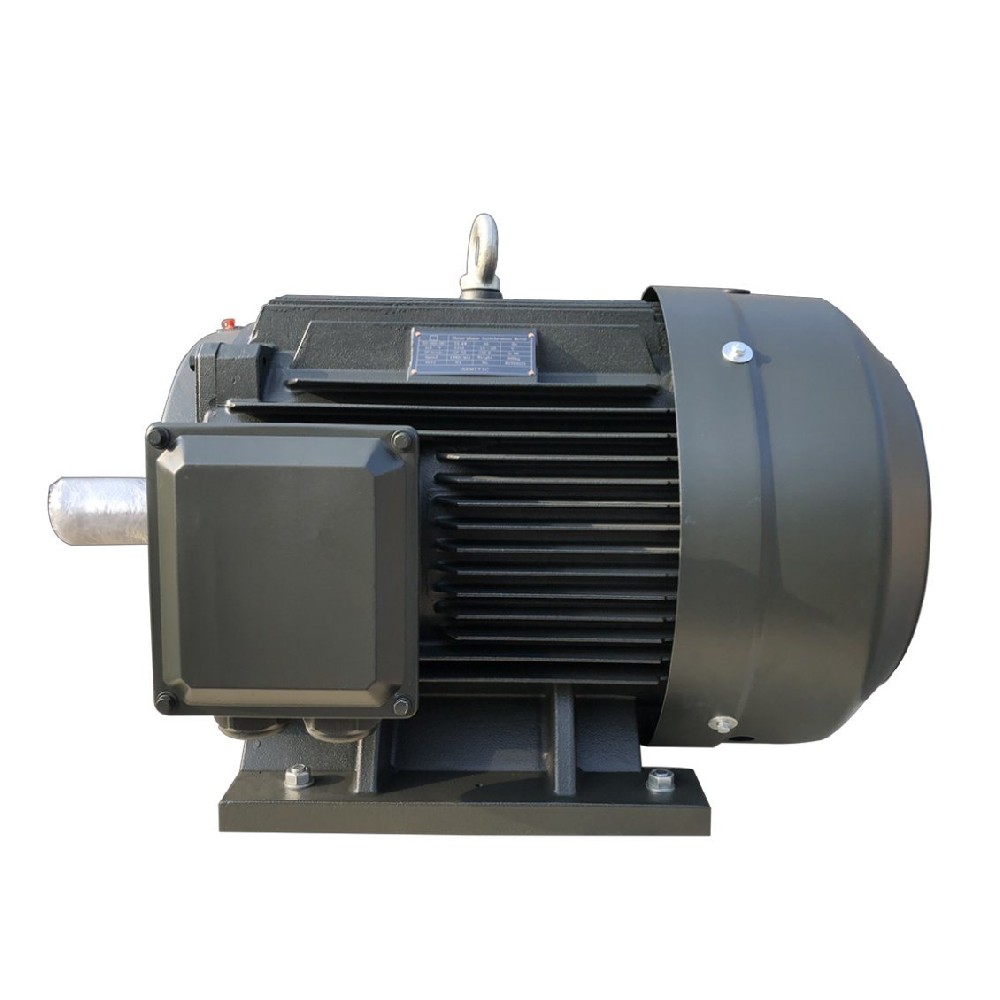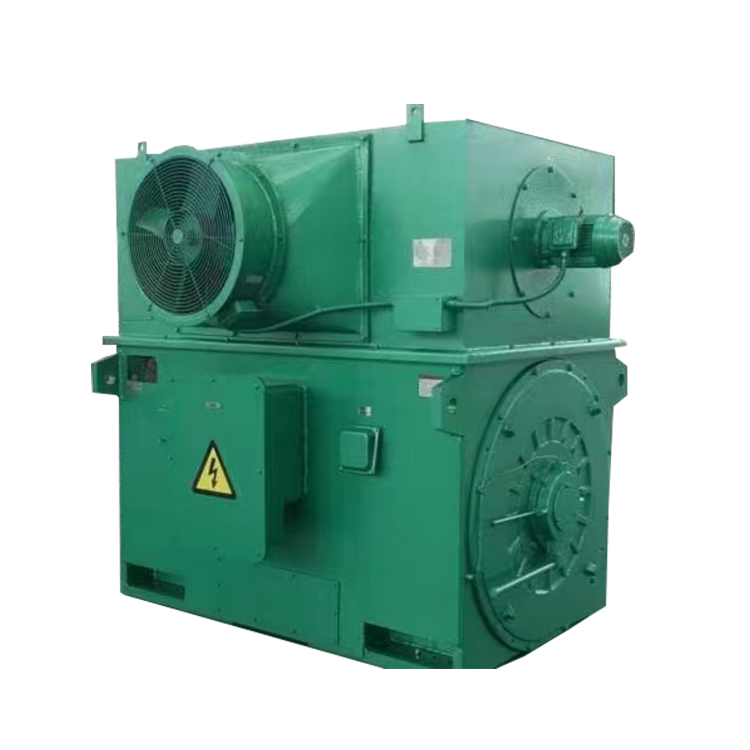News
New Products
Troubles and Shootings of Three-phase Asynchronous Motor
2022/10/12
A、Failure or Motor Bearings
After the bearing is damaged, the stator and rotor will rub (commonly known as bore cleaning), and the insulation performance of the motor will be reduced, aged or damaged. Grounding or interturn short circuit of stator coil occurs frequently, which may lead to bending of rotor, broken rotor bar or scrapped end cover in serious cases. Therefore, bearing damage must be avoided as far as possible.
1、Regular reasons:
1.1.1 The bearing is assembled in the wrong way. If the inner ring of the bearing fits the shaft too tightly or too loosely, the inner sleeve may run away. The fitting between the bearing outer ring and the end cover (or bearing sleeve) is too loose, which may cause the outer sleeve to run away. Whether it is the outer sleeve or the inner sleeve, it will cause the motor bearing to heat up and deform, which will eventually lead to bearing damage. In addition, if the bearing is not installed in place, it will also cause the bearing to heat up and make a loud noise. When installing the bearing, do not overheat the bearing. Too much heat will affect the service life of the bearing.
1.1.2 The type of bearing grease is incorrect or the quality is poor, or it may be that there is too much or too little bearing grease, and two different types of grease are mixed with each other. Or, forget to add lubricating grease during assembly, so that the motor will be burned due to lack of oil in the bearing。
1.1.3 There are small impurities in the bearing chamber. After running, the bearing heats up and makes a loud noise, causing the motor to burn down。
1.1.4 Both sides of the motor end cover or bearing cover are not installed in parallel, which makes the rotor hard to rotate. Or, the end cap is not in place.
1.1.5 The motor bearing is not regularly oiled, which makes the motor bearing lack of oil and the bearing temperature rise until it is burnt out。
1.1.6 Improper assembly of belt pulley and coupling causes overheating of bearing, long time and locking damage。
2、Shootings:
1.2.1 When assembling the motor bearing, the bearing heater is generally used to heat the bearing to 80 ° to 100 °. Only in this way can the assembly quality be guaranteed. If the fit between the bearing inner ring and the shaft is too loose, the shaft collar can be sprayed with metal, and if it is too tight, it can be reworked. If the bearing outer ring and end cover (or bearing sleeve) are too loose, expand the cover hole and install the sleeve, and if they are too tight, re process them. After the motor is installed, the rotor should be rotated very flexibly by hand. Check whether the end cover is assembled in place and put into use after confirmation。
1.2.2 Replace the lubricating grease of other models and good quality. When adding the lubricating grease, it should not exceed two-thirds of the bearing chamber. It is strictly prohibited to mix two different types of lubricating grease. The lubricating grease should not be added too much or too little, nor too dirty。
1.2.3 Before installing the bearing, the bearing must be carefully checked. No impurities are allowed in the bearing, and the grease filled must be clean.
1.2.4 Install the end covers or bearing covers on both sides flatly and tighten the bolts。
1.2. Patrol the motor regularly, and replenish new grease in case of oil shortage。
1.2.6 Readjust the assembly pulley, coupling and end cap. Bearing cover, etc., to meet the assembly requirements。
B、The motor cannot be started
1、The power is not connected or the power indicator is not lit。
2.1.2 Stator winding open circuit。
2.1.3 Rotor winding open circuit。
2.1.4 Short circuit between stator windings。
2.1.5 Stator winding interturn short circuit。
2.1.6 Stator winding grounding。
2.1.7 Stator winding wiring error。
2.1.8 Fuse burnout。
2.1.9 The setting value of thermal relay is too small。
2.1.10 Wiring error of control equipment。
2.1.11 Excessive load or transmission device stuck。
2. Shootings:
2.2.1 Check whether the air switch, each pair of contacts, motor lead out terminals and power supply are normal, find out the fault and repair it.
2.2.2 Check whether the stator winding is broken with a megger.
2.2.3 Check whether the rotor winding is broken with a megger.
2.2.4 Check whether the insulation between phases or layers is well padded or handled improperly, which may damage the insulation at the motor terminal cover. Connect the motor with low-voltage alternating current. If the three-phase current difference is more than 10%, the phase with large current is short circuit.
2.2.5 Use a megger to measure whether the three-phase current is balanced, or use your hand to check whether the coil is overheated, whether the winding is damp, and whether the insulation is broken down after the winding is pressurized. Or whether the motor is overloaded for a long time, and the current exceeds the rated current, which makes the insulation aging and loss of insulation effect.
2.2.6 Use a megger to measure the resistance of the stator winding to the ground. Connect the two lead wires of the 1000V megger to the motor housing and lead wires respectively. Measure the insulation resistance. If the resistance is very small, it means there is a fault. If the insulation resistance is greater than 0.5 megohm, it is normal. Whether the motor shaft can be rotated flexibly by hand, and whether the stator and rotor rub each other, causing stator winding insulation damage and grounding. Check whether the insulation of the outgoing line is damaged when it contacts the shell or the insulation is damaged when the line is embedded.
2.2.7 Check whether individual coils of stator winding are connected wrongly, whether pole phase group is connected wrongly, and whether external wiring is connected reversely. Correct according to correct methods, and re determine the head and tail of each phase winding.
2.2.8 Find out the cause of burn out and equip with a new fuse.
2.2.9 Adjust the setting value appropriately.
2.2.10 Recalibrate the wiring according to the wiring diagram.
2.2.11 Select large capacity motor or reduce the load to eliminate the fault of transmission device.
C、When the motor operates with load, the speed is lower than the rated value
1. Possible causes: a. The power supply voltage is too low. b. Broken squirrel cage rotor bars. c. The load is too large. d. Open phase operation. e. The delta connected motor is wrongly connected to Y.
2. Handling method:
a. Check the power supply voltage at the motor input terminal with a multimeter, find out the cause of low power supply voltage, and handle it according to the situation.
b. Connect the motor to the three-phase AC power supply with low voltage, and measure the stator current at the same time. If the rotor bar is broken, the stator current will change with the rotor position.
c. Select a large capacity motor or reduce the load. Motor overload will increase the loss and winding temperature, so as to damage the motor insulation. Therefore, when the motor is running, the current cannot exceed its rated current for a long time.
d. Check three-phase current with clamp ammeter to confirm which phase it is. Check whether the air switch and thermal relay are in good condition, whether the fuse is burnt, whether the contactor contact is burnt, whether the wire at the motor terminal is burnt out, and whether the coil is grounded and whether there is wrong winding wiring with a megohmmeter and multimeter. The direct harm of open phase operation is that one or two phase windings of the motor are overheated or even burnt out. Overcurrent operation accelerates insulation aging. We should try to avoid open phase operation.
e. Change the connection.





